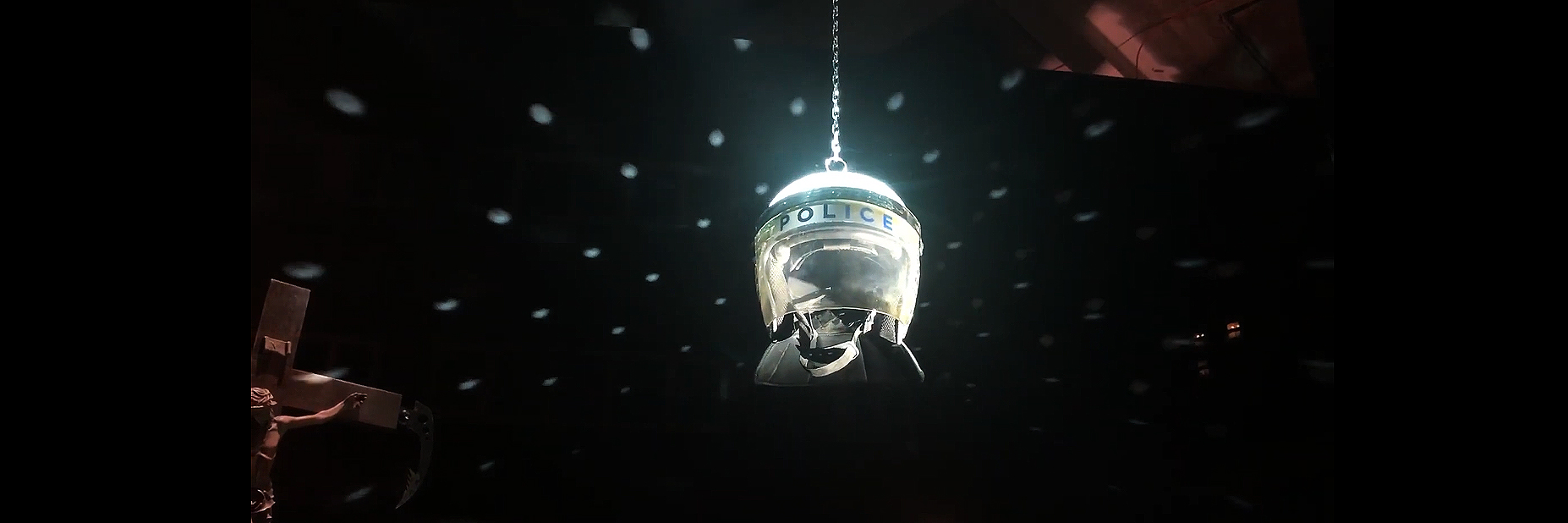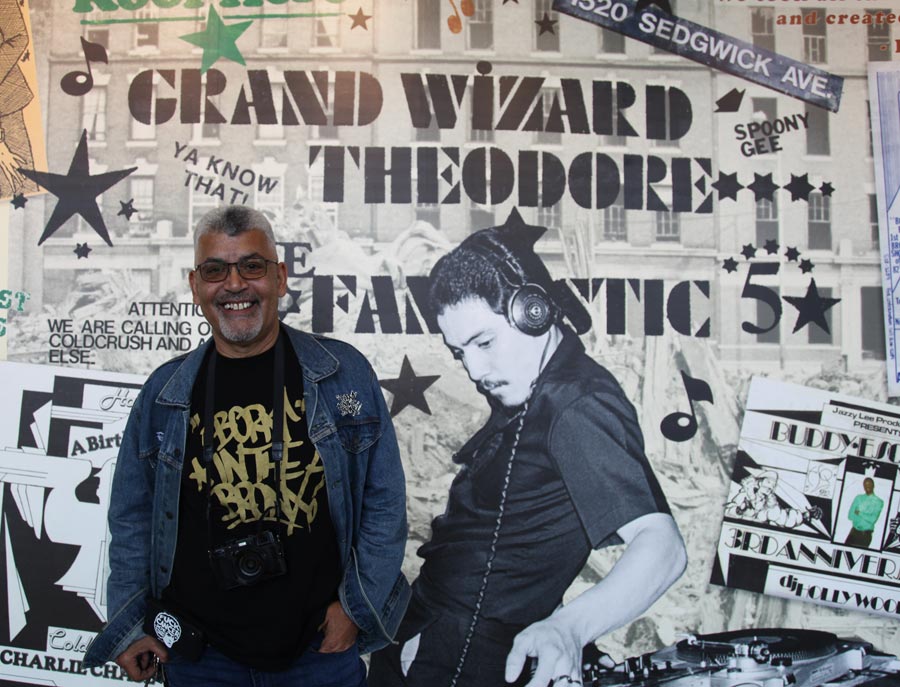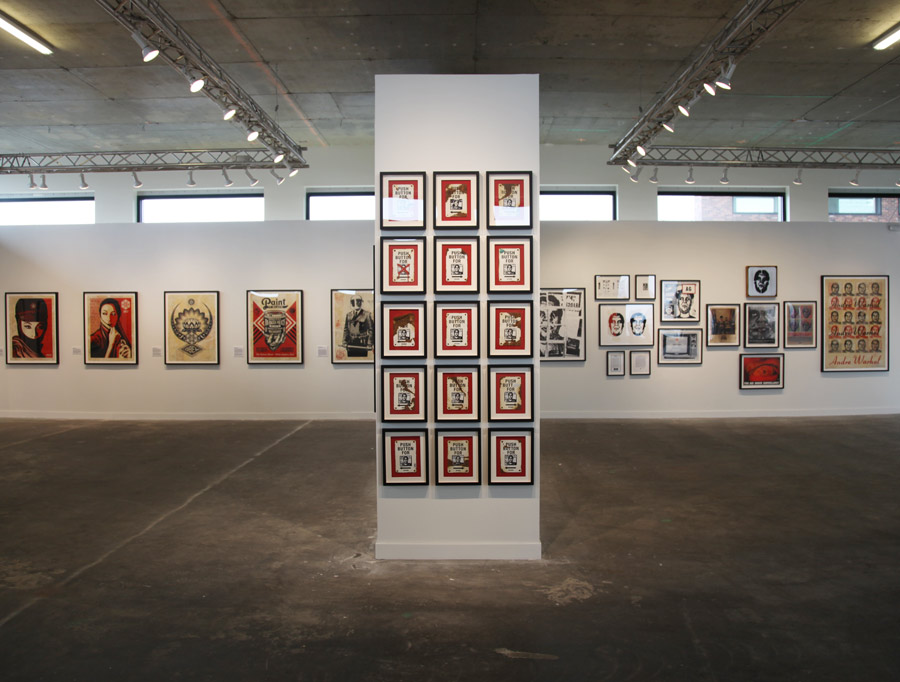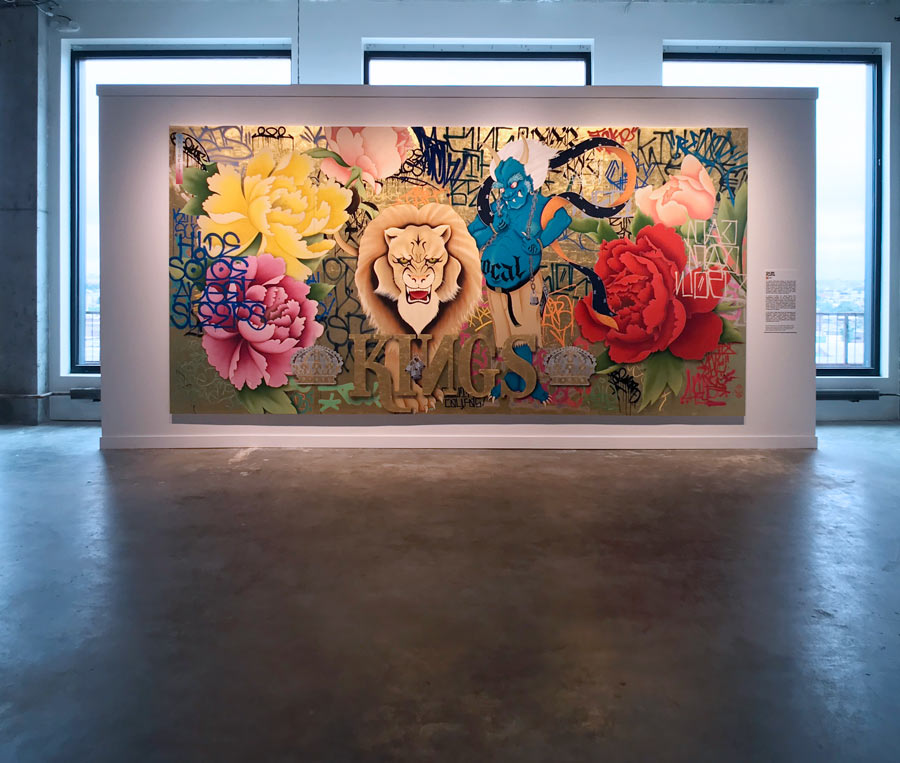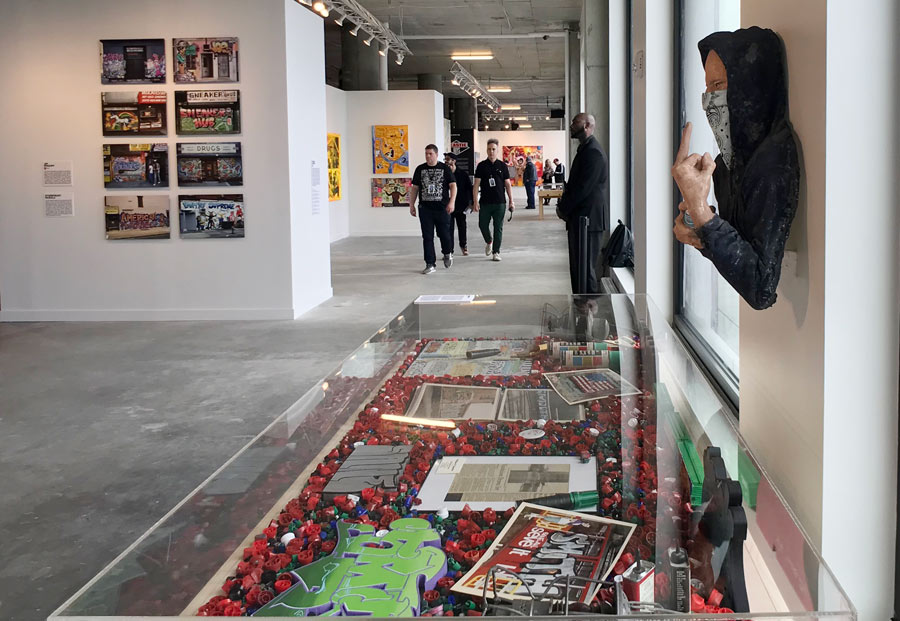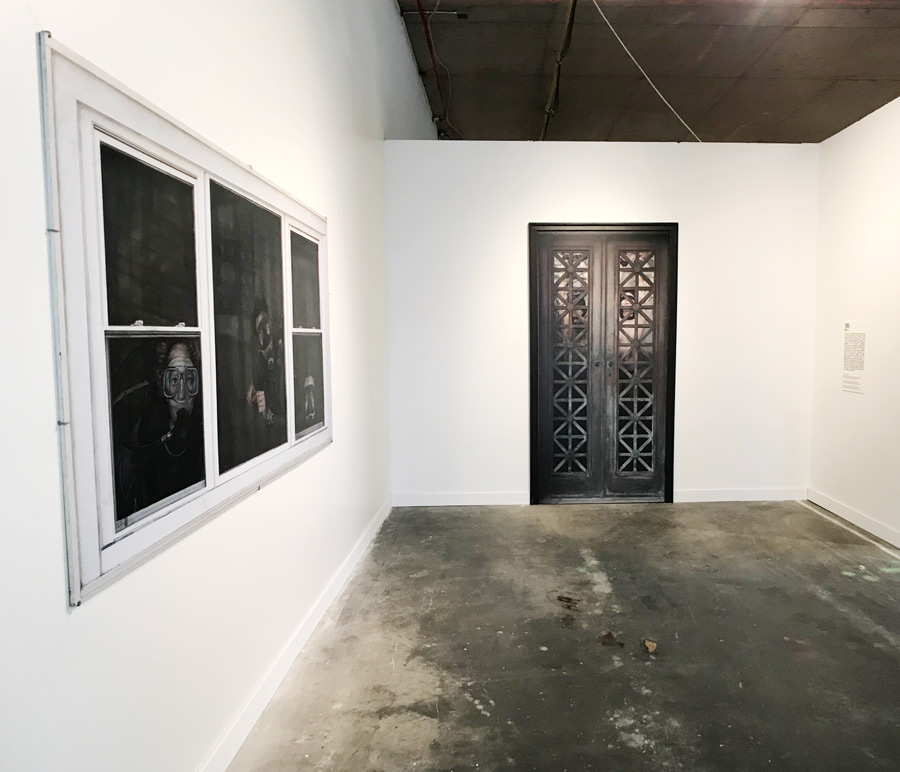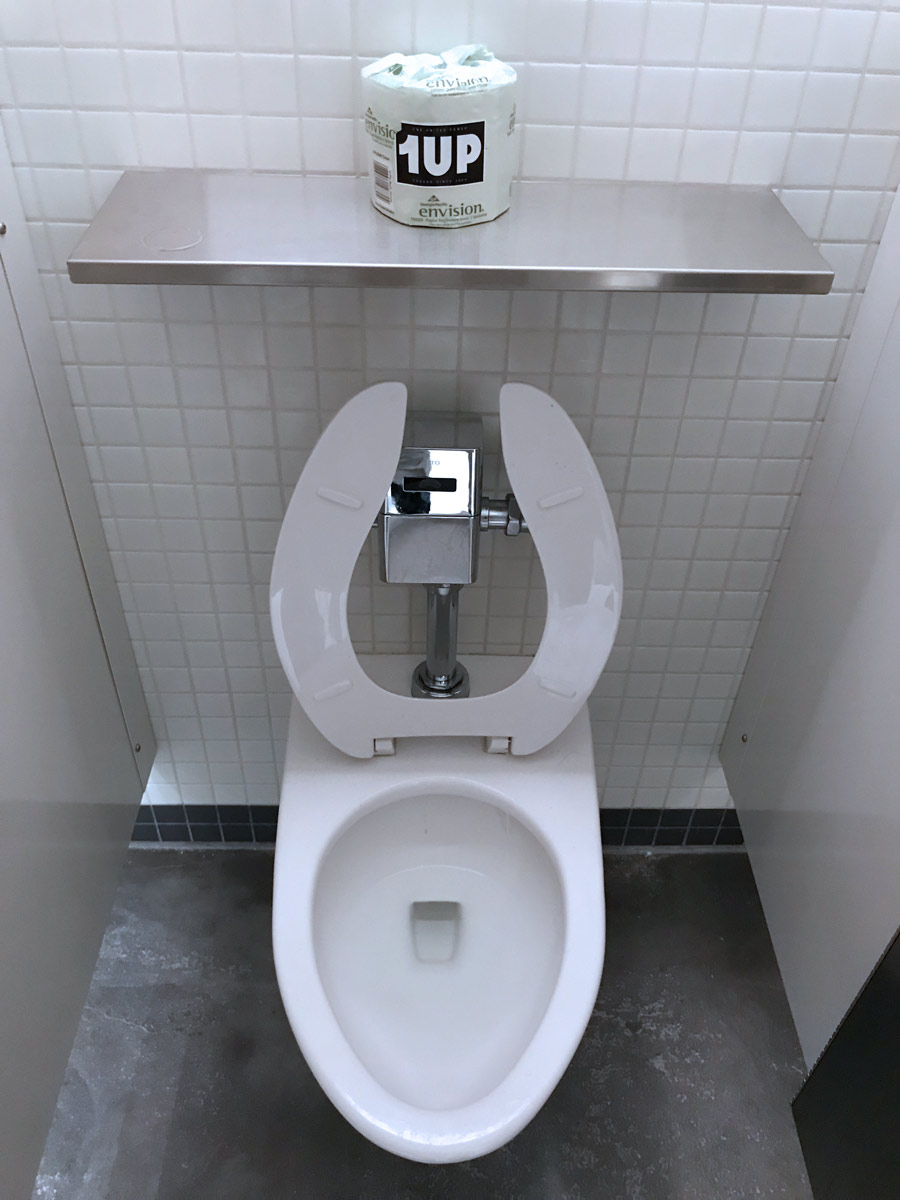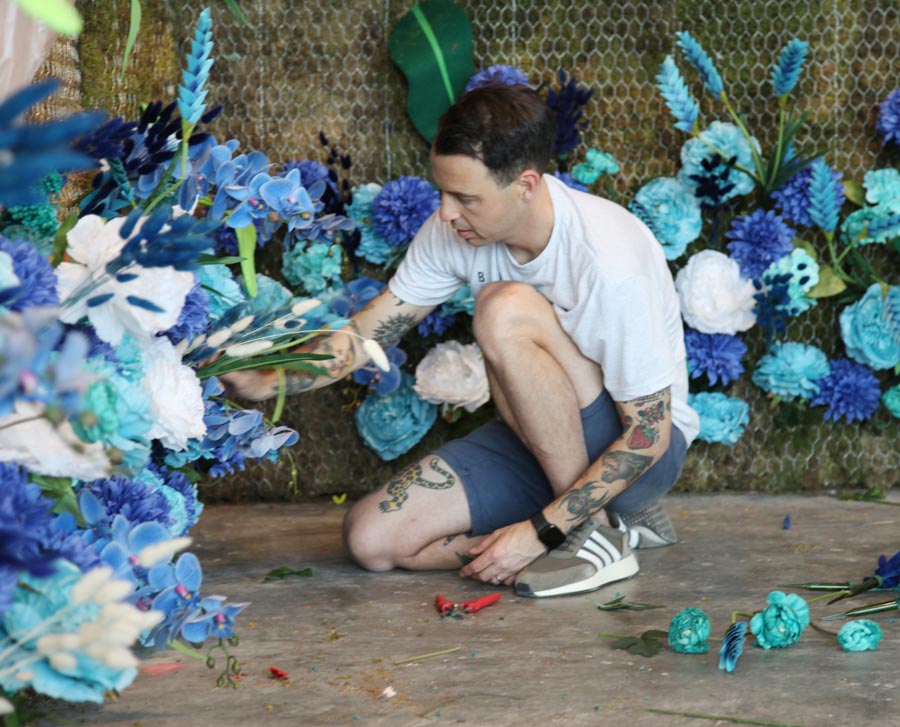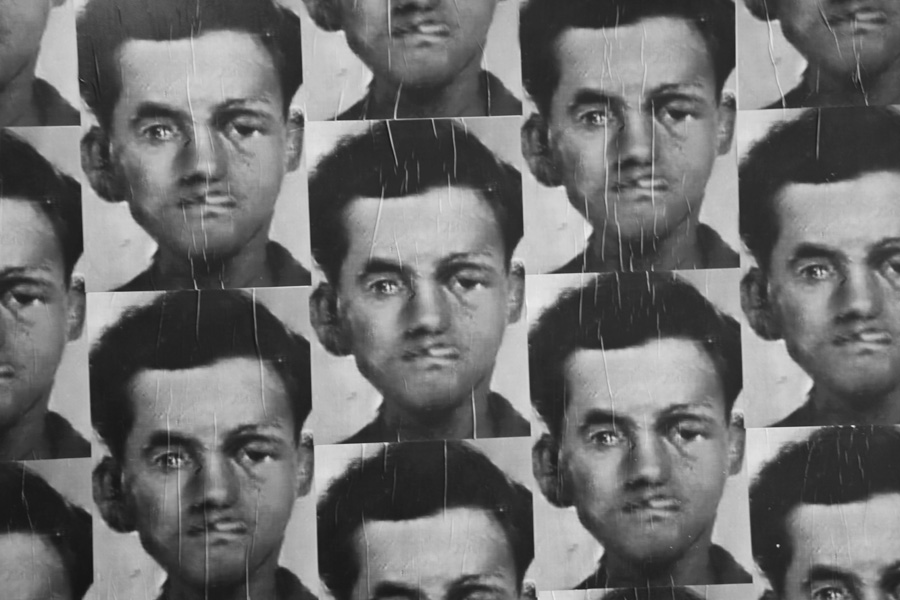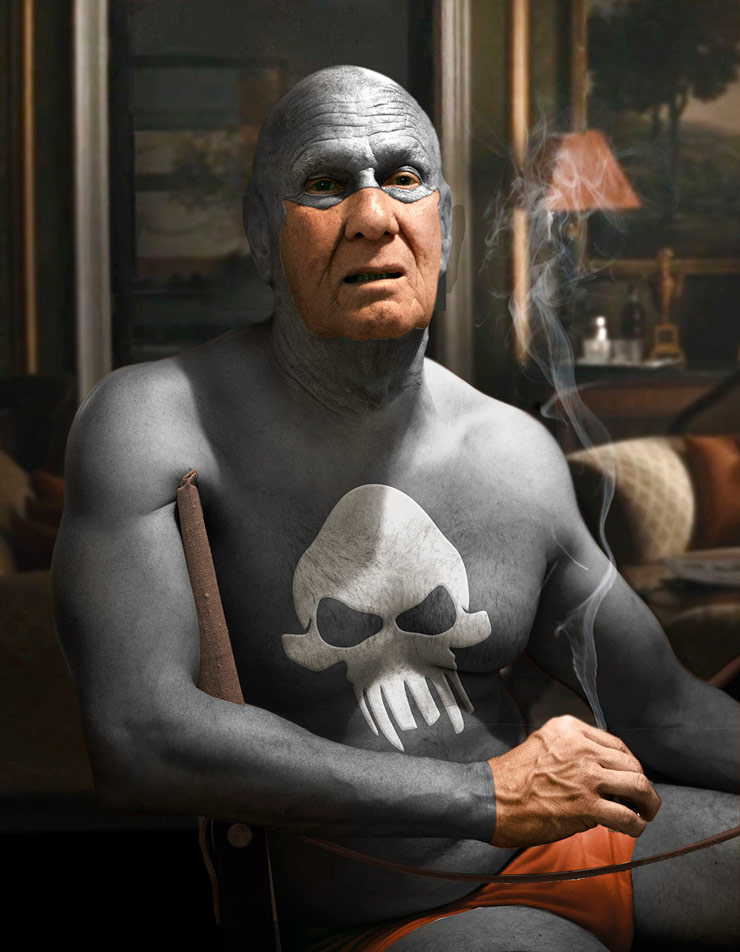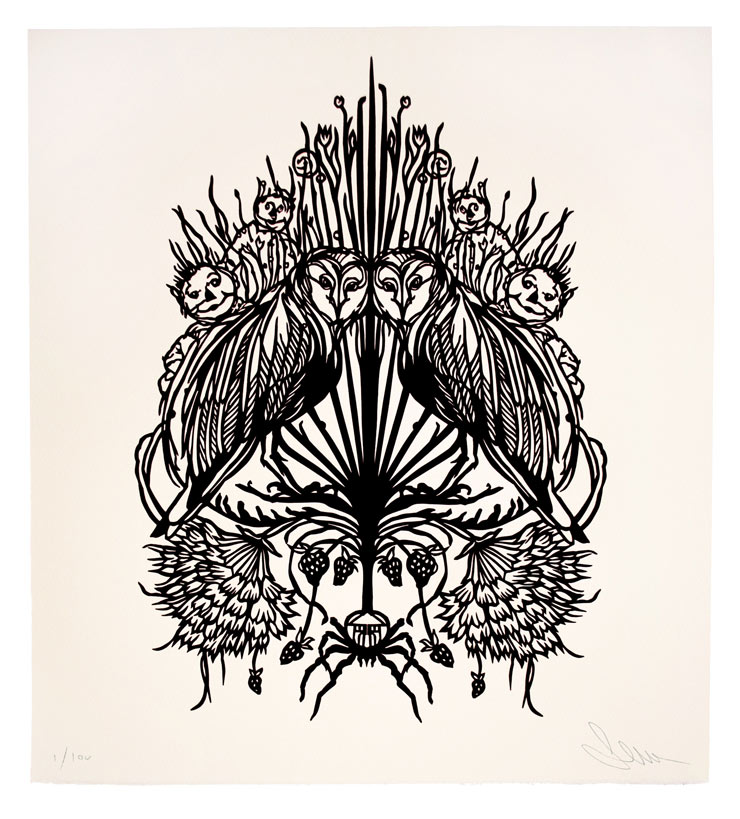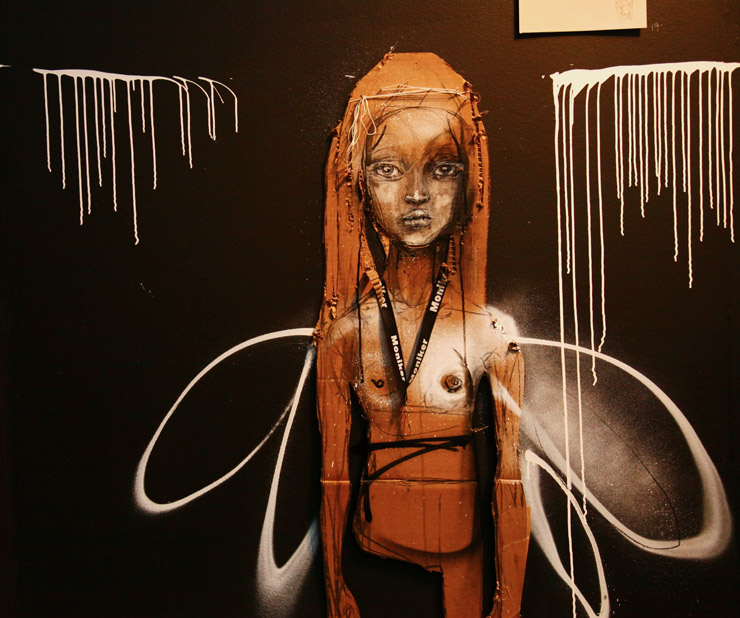BSA has been here with you for this entire decade – an honor and a privilege. Reviewing the many interventions and events we witnessed and shared with our readers, we realize that this grassroots people’s art movement is reflecting our society in fundamental ways and reaching deep as well as wide. Here in roughly chronological order we recount for you a Top 10 for BSA that have impacted our way of seeing art on the streets.
1.
The “Girl In The Blue Bra” – December 2011
Oppressive regimes worldwide have a few commonalities. One of them is patriarchy. Over the last decade we have seen many female artists rise powerfully to smash it, harnessing their rage and power and taking their voice to the street.
There were countless images that encapsulated the ferocity and the tenacity of the protesters during the Arab Spring uprisings in Cairo, Egypt in December of 2011. One image, in particular, captured the attention of the media and the public. The image is commonly referred to as the “Girl In The Blue Bra”. The image depicts a young woman, whose identity remains anonymous, being beaten and dragged by soldiers as she was taking part in the protests in Tahrir Square in Cairo, against Egypt’s Supreme Council of the Armed Forces. Her face is veiled and her jeans are still on but as she was being dragged by the soldiers her abaya came undone exposing her bare torso and revealing her blue bra as a soldier was about to kick her in her abdomen.

While the image exposed the abusive practices and of power of the military in Egypt – it also swiftly sparked ferocious reactions around the globe, particularly with women who subsequently staged their own march in Tahrir Square in Cairo to demand the end of military rule.

Among the artists who carried the Blue Bra theme to the streets was one artist, Bahia Shehab, whom BSA and its readers helped to get a movie made about Street Artists in the Arab Spring, called Nefertiti’s Daughters, directed by Mark Nicolas. Later we were the first to debut a scene from it at the Nuart Festival in Norway (“#Activism on the Street Now”), and years after that Nuart actually hosted professor Shehab. This is a small world, this Street Art community.
The actions of the young woman, the violent response of the military, and the overwhelming support of the public, in general, sparked a new wave of feminism in Egypt and inspired artists to create and display their artworks on the streets in protest.


2.
“Art In The Streets” Opens at LA MOCA – April 2011
Art in the Streets was the first major U.S. museum survey of graffiti and street art, curated by MOCA Director Jeffrey Deitch and Associate Curators Roger Gastman and Aaron Rose, an exhibition tracing the development of graffiti and street art from the 1970s to the global movement it had evolved to. BSA was there to capture and share some of what was happening.
Red Hot and Street: “Art in the Streets” Brings Fire to MOCA
From BSA
“Yes, Banksy is here. The giant ‘Art in the Streets’ show opening this weekend at the Museum of Contemporary Art in Los Angeles gives a patch of real estate to the international man of mystery who has contributed greatly to the worldwide profile of what is soon to be, maybe already is, a mainstream phenomenon known as street art. A smattering of his pranksterism is an absolute must for any show staking claim to the mantle of comprehensive survey and an excellent way to garner attention. But “Streets” gets its momentum by presenting a multi-torch colorful and explosive people’s history that began way before Banksy was born and likely will continue for a while after.
The show is an audacious multi-platform, colorful endeavor; part history lesson and part theme park bringing about 50 years of graffiti and street art history, it’s influences and influencers, under one roof. Then there is the stuff outside. Engaging and educational, “Art in the Streets” makes sure visitors have the opportunity to learn how certain tributaries lead to this one river of swirling urban goo, mapping connections between cultural movements, communities, and relationships within it. When it does this, the museum system effectively differentiates its value apart from a mere gallery show. “
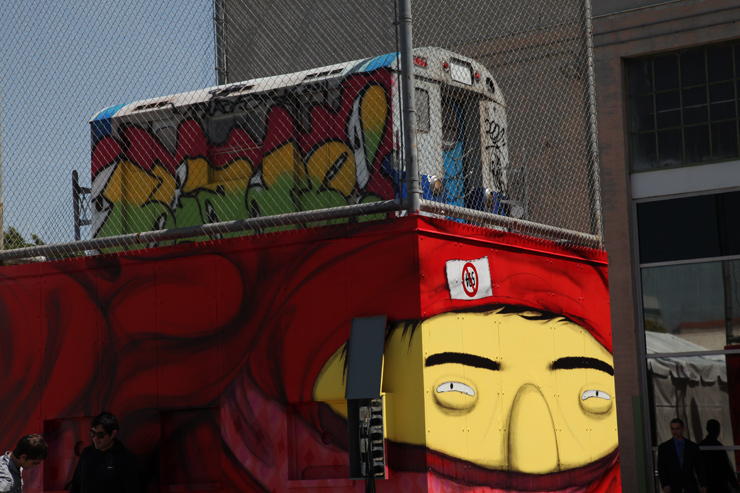

3.
Banksy’s NYC Residency – “Better Out Than In” – October 2013
An unprecedented city-wide near daily installation of works in New York established a new high-water mark in the flood of Street Art that took many cities in the 2010s. The British Street Artist played to a media capital in such an effective campaign that even the least interested residents became familiar with the elusive prankster.
Banksy’s Final Trick
From BSA
A Genuine October Surprise for New York Street Art Friends and Foes Alike.
“In a series of communiqués beamed from his website, the global Street Artist Banksy gave graffiti and Street Art followers a near-daily jolt of mystery and mouse clicking that had people looking at every street scene as a possible Banksy by the time it ended. While few can confirm the exact level of involvement the actual artist had in the five boroughs, if any, none will deny that the Banksy brand underwent a major “refresh” this month that again put his name on the lips of those who had begun to forget him and many who had never heard of him.
Thanks to this masterful marketing campaign billed as a month-long ‘residency’ on New York’s streets, many thousands were talking about him daily on the street, on television, radio, social media, in galleries, studios, office cubicles, art parties, and the mayors’ office. By effectively combining the sport of treasure hunting with humor and populism, each new cryptic appearance of something-anything gradually conditioned some grand art doyennes and the plainer mongrels amongst us to drool on command and lift a leg in salute to the curiously still anonymous artist and the team who helped him pull it off.”


4.
The Brooklyn Museum’s Exhibitions with Swoon, Faile, BÄST, Haring, Basquiat, ESPO, JR Expand Knowledge, Appreciation
One cultural institution in New York City and indeed in the United States has been notable throughout the decade for its commitment to organizing exhibitions where graffiti, street art, and the artists whom have shaped it are given recognition for their contribution to the arts. The Brooklyn Museum’s leadership, including former director Arnold L. Lehman, current director Anne Pasternak, and Sharon Matt Atkins, Director of Exhibitions and Strategic Initiatives have been channeling resources and focus to the study, promotion, and exhibition of the works of important figures in the contemporary graffiti and Street Art movement. It notable that the museum has in its permanent collection the works of distinguished graffiti and Street Artists dating back to the dawn of the modern scene; something that other important cultural institutions in New York City that are dedicated to the preservation and promotion of modern, contemporary, and American art lack in their collections.
It’s for this reason that we have selected the Brooklyn Museum as one of the top ten graffiti and street art movers of the decade. Predated by 2006’s “Graffiti” exhibition the museum has mounted several important presentations during this decade that have not only been blockbusters but they have contributed to the cultural enrichment of all New Yorkers and the expanded discussion of the relevance of these art forms to established canons. Here are some highlights:
Keith Haring – March 2012
From BSA
Keith Haring 1978-1982 : Early Keith at The Brooklyn Museum
“Keith Haring: 1978-1982, a traveling exhibition first shown in Kunsthalle Wien in Vienna and The Contemporary Arts Center in Cincinnati, introduces a period of his work not often examined, taking you up to the edge of the seemingly sudden international fame he experienced as artist, activist and public figure through the rest of the 1980s.
… At a time when the small-town boy was developing his visual vocabulary as an artist, Haring was also discovering himself as a man in the world and in a city that he found endlessly fascinating and worthy of exploration. Capturing his spirit of hands-on experimentation, the show is almost entirely comprised of works on paper with one collaborative piece on plywood with his contemporary Jean Michel Basquiat, paper collage, video, and documentary photos.”

Swoon – April 2014
From BSA
“Swoon: Submerged Motherlands”, A Tree Grows in Brooklyn Museum
“Sharon brought me in here and said, ‘What is interesting to you in the building?’ and I really love that because the thing about working on the street is that you are always thinking site-specifically. And so that thinking has to translate into your work in all places. For me, if I make something in a museum I want it to be very site-specific and this is probably one of the most site-specific pieces I’ve ever done,” explains Swoon.
Under the advice and guidance of an engineer, the artist also modified her design process to allow for foundational considerations like truss sections and lift points. “I showed him an initial model and he showed me an engineered system and then I built another model based on the system that he engineered.”
It is probably unusual for a grand museum to be so amenable to the requests of an artist for a site-specific piece that literally inhabits the furthest reaches of space, and Swoon says she recognizes the leeway she received. “You know, they have been really adventurous in letting us create this. We’ve been sort of pushing a lot with the creation of this piece.”
For Matt Atkins, the opportunity to bring an internationally known street artist and neighbor into the museum has been the result of just over two years of planning. ‘It’s been so wonderful working with Swoon to realize her vision for this project. This is the first time we’ve really used the full height of the 72-foot dome, so it’s quite spectacular. I am thrilled to see her boats back in New York and for them to have this new life. The underlying ideas about climate change in the installation also make this project an appropriate tie into the Museum’s focus on activism with our other exhibitions and collections,’ she says.”

Basquiat: The Unknown Notebooks – April 2015
From BSA
Basquiat’s Notebooks Open at The Brooklyn Museum
“In Basquiat: The Unknown Notebooks, now running at The Brooklyn Museum until August 23rd, the genius of his fragmenting logic is revealed as a direct relationship between his private journals and his prolific and personally published aerosol missives on the streets of Manhattan’s Soho and Lower East Side neighborhoods in the late 1970s and 1980s.
These notebooks were for capturing ideas and concepts, preparing them, transmuting them, revising them, pounding them into refrains. In the same way his text (and glyphic) pieces on the street were not necessarily finished products each time; imparted on the run and often in haste, these unpolished missives didn’t require such preciousness.”

Faile & BÄST – July 2015
From BSA
Holy Faile ! “Savage/Sacred Young Minds” at Brooklyn Museum
“FAILE may be a religious experience this summer at the Brooklyn Museum, but only one of the hallowed installations is called Temple. The seedier, more dimly lit venue will surely have the larger number of congregants by far, bless their sacred hearts.
Celebrating the duality and appropriation of words, slogans, and images have been the bailiwick of the duo since they first began hitting Brooklyn streets at the turn of the century with their stencils and wheat-pastes on illegal spots and neglected spaces. In FAILE: Savage/Sacred Young Minds, their new attention-commanding/refracting exhibit organized by Sharon Matt Atkins at the Brooklyn Museum, these guys pour it on, compelling you into a complex panoply of possible re-imaginings of meaning that reference pop, pulp, myth, art history, 50s sci-fi, 60s advertising, comics, punk zines, consumer culture and their own pure artistic and branded fiction.”

Stephen ESPO Powers – November 2015
From BSA
Coney Island Dreaming: Following the Signs to Stephen Powers
Stephen Powers: Coney Island Is Still Dreamland (To A Seagull) is one of 3 new exhibits inspired by the historic attractions of Brooklyn’s seaside.
“Graffiti artist-turned-sign painter Stephen Powers is dreaming of Coney Island and he is bringing a colorful collection of found and freshly produced signage that evokes a forgotten era to climb the columns of a Brooklyn Museum gallery.
Given the boisterous parade of brands and logos into museums that is happening as part of the institutional funding and programming mix, it’s fun to see the ninth episodic installation of this traveling ICY SIGNS shop here; its simplicity and guile recalling amusing persuasive techniques from the mid-century American advertising lexicon. Simultaneously, for those who have been lucky enough to sicken themselves on cotton candy and The Wonder Wheel, the new show imparts a rather reassuring and seedy nostalgia for Coney Island, complete with an inexplicable hankering for a thick beef hot dog.”

JR – October 2019
From BSA
“JR: Chronicles” Revels in His Explorations at Brooklyn Museum
“A retrospective at Brooklyn Museum currently showcases the photographic works and public projects envisioned and created by French Street Artist JR. Covering roughly two decades of work, JR: Chronicles dedicates an in-depth examination into his practices and personal philosophies when creating – as evidenced by this collection of his murals, photographs, videos, films, dioramas, and archival materials.
Brooklyn Street Art: JR created a new digital collage for this exhibition featuring a thousand or so people individually interviewed and photographed. Can you tell us about what criterion he used for selecting his subjects?
Sharon Matt Atkins: JR’s main focus was on capturing the rich diversity of New York City. As such, he photographed people in all five boroughs of the city, including many neighborhoods that were new to him. While he did invite some guests to participate, most of the people were passersby or business owners and workers of local stores. “

JR: Chronicles. Brooklyn Museum. Brooklyn, NY (photo © Jaime Rojo)
5
Blu and Street Art – Banksy & Co.
Curated by Christian Omodeo, Luca Cinacabilla, and Sean Corcoran. March 2016
BLU buffing his own works in Bologna took the news cycle, his legion of compatriots armed with rollers and bucket paint. But it was the show that he was reacting to that brought thousands to the museum space to discuss the rightful place of Street Art, graffiti, and the relevance of preserving it for posterity.
From BSA
BLU Allies : A Counter Exhibition to “Banksy & Co.” Launched in Bologna
“The contested Banksy and Co. exhibition contains, among many other works, walls removed from a privately owned abandoned building in Bologna that were painted by BLU. Displaying the walls and his artwork without his consent so angered the painter that he rallied artists and activists to help him snuff out all his remaining murals and paintings in this Northern Italian city last week. (See A BLU Buffer Talks About the Grey Action in Bologna)
The heavily attended Friday night opening of Street Art – Banksy & Co. at Palazzo Pepoli – Museo della Storia di Bologna was curated by Luca Ciancabilla, Christian Omodeo, and Sean Corcoran and features roughly 250 historical and contemporary works spanning about fifty years and highlighting a number of movements within the so-called Urban Art genre. On balance it appears that 90 percent of the works are studio works, paintings, sculpture, videos, original sketches, and ephermera and were probably collected in a more conventional way and the tagged posters, stickers, metal doors, and wall fragments are viewed in the context of the whole scene.”
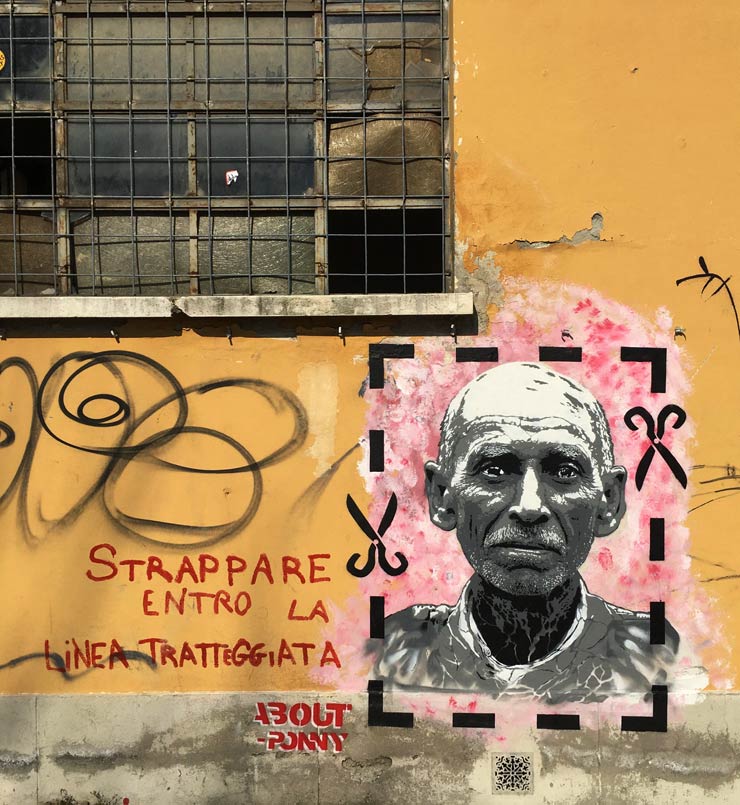
A BLU Buffer Talks About the Grey Action in Bologna
From BSA
“Reality TV is usually completely devoid of reality. That isn’t the exact comparison Andreco said on his Facebook page but we thought it was a fitting analogy. Street Art in a museum or gallery can sometimes feel like taxidermy.
Andreco actually said ‘Deciding which wall to paint or not to paint has always been one of our free choices. This operation, to uncork the walls and move them elsewhere, oversteps this freedom.’ Fair enough.
Of course, that is not the primary reason why activists and Street Artists joined in to help BLU paint over the many murals that he completed on Bologna city walls over the last two decades or so. In an English titled press release on the Italian website Wumingfoundation the artist lays out a multi-layered justification for destroying his own murals, many of which have become beloved landmarks around the city and which have helped make him an art star in some circles.”

American conceptual, activist and street artist John Fekner, whose art and his art partner Don Leicht were represented in the exhibition Street Art: Bansky & Co weighs in the controversy by saying:
- The bottom line is: what’s done in public-doesn’t remain in public. There’s no protection for artists who trespass. It’s the chance one takes outdoors.
- If you create illegal art murals, street rules are always in effect:
- You can’t stop a drunk in the middle of the night from pissing on your wall.
- You can’t stop a bulldozer from razing your work.
- You can’t stop a neighborhood anti-graffiti squad from painting over your work.
- You can’t stop a well-dressed thief in a suit, or their hired slug with a chisel from removing your wall work and hauling it off to their laird, garage, museum or art market.
“Under any circumstances, don’t immediately and irrationally react. If your original aspirations were to be an artist- then just do what you were meant to do: be an artist. Don’t double shift and be a night watchman patrolling the streets to try and thwart thieves of your work. Unique temporary outdoor creations engender a public conversation that includes everyone: art lovers and art haters, lowbrow and highbrow, and everyone who interacts with your public work.”

6.
Urban Nation Museum for Urban Contemporary Art Opens in Berlin – September 2017
We had the unique perspective of being two of the foundational curators who made this exhibition happen and made the doors fly open to thousands of visitors, so it only made sense that we covered the opening that brought much promise to the institutional recognition of Street Art, graffiti, and its move into Urban Contemporary.
From BSA
“Inundated!” Scenes from the Opening: UN – Urban Nation Museum For Urban Contemporary Art in Berlin
“This week is Art Week in Berlin, and you just stole Art Week,” said a handsome and intensely opinionated German to us as we leaned on the arm rail of the M.C. Escher-inspired walkway before a Carlos Mare139 sculpture and above the capacity crowd on Saturday night at the Urban Nation Museum of Urban Contemporary Art (UN).
Not sure if that was the exact goal, but we get his larger point; the UN has just made a massive entry into a number of societally and culturally influential minds when it comes to the relevancy of Street Art and graffiti to visual culture and art history. This movement into so-called Contemporary began as early as the 1970s and has overcome and weathered cultural and market ebbs and flows – persisted, if you will – yet somehow institutions have been wary of this work and these artists and unable to fully embrace their importance, you decide why.”


7.
Five Pointz: A Legal Case For Urban Artists Shifts the Focus – February 2018
From BSA
Tell It to The Judge ; Graffiti Artists Win in 5 Pointz Case
“In a ruling that many graffiti and Street Artists interpret as a validation of their artwork and which may spawn further legal claims by artists in the future, Brooklyn Judge Frederic Block, a United States Federal Judge for the Eastern District of New York, awarded $6.7 million in damages to a group of 21 artists in the high profile case of the former graffiti holy place in Queens called 5 Pointz.
Under the leadership of artist and organizer Jonathan “Meres One” Cohen, also a plaintiff, the award is in response to a suit that cried foul on the overnight destruction of multiple artworks on building walls without consultation or notification of the artists.
Citing provisions of the 1990 Visual Artists Rights Act that grants artists certain “moral” rights, the artists claimed that their artworks on the 5 Pointz compound that was owned by real estate developer Jerry Wykoff were protected and should be afforded certain rights and considerations.
Arts and intellectual property lawyers and judges will now be examining the implications of the ruling and citing it as an example in arguments about art created on walls legally and possibly those created illegally as well. In a city that prides itself as being a birthplace of graffiti and Street Art, many artists and wall owners must ask themselves if there will need to be an additional layer of the agreement before an aerosol can is held aloft.”



8.
The New York Times Publishes DONDI’S Obituary – February 2019
In an unprecedented posthumous publication of an obituary, this year The Times acknowledged something that it had so far failed to do; the contribution of graffiti writers to the cultural and art canons deserves serious recognition. By publishing the iconic image of DONDI taken by Martha Cooper that burned “Subway Art” into the mind’s eye of many generations of graffiti writers, the “paper of record” caught up with one the the scene’s leaders and heroes.

The NYT obituary of Dondi begins like this:
“Overlooked No More: The Underground Graffiti Adventures of Dondi
Donald Joseph White, considered a legend before “street art” became popular, turned New York City’s subways into rolling canvases of color, humor and social commentary.”

9.
Martha Cooper: A Picture Story Premieres at TriBeCa. A film by Selina Miles. April 2019
From BSA
MARTHA: A Picture Story. Shots from the Premiere and Movie Review
“First things first – Full disclosure; we are featured in the movie and we are close friends with both the subject of the doc and the director and we first suggested to the director that she was the perfect candidate to make a film about Martha Cooper. Now that we have that out of the way here are a number of shots from the premiere and our review of the movie:
Martha: A Picture Story had its world premiere at the Tribeca Film Festival this Thursday to an enthusiastic crowd that included big graffiti, Street Art, international press and film industry names, to see the highly anticipated documentary about the venerable photographer Martha Cooper by the Sydney director Selina Miles.
The electricity was in the air as Director Miles and producer Daniel Joyce along with the just-arrived Australian members of the “Martha” crew looked for their seats in the Village East Cinema. After a brief introduction by Miles, who told the audience that the film had been a great pleasure to make, the curtain went up to reveal the mother of the superstar art twins Os Gemeos on the big screen. She is sitting at her kitchen table in São Paulo remarking how her boys used to draw on everything, including fruit, and how Cooper and Chalfant’s 1984 book “Subway Art” changed their lives forever. With their story as a backbone for the film, the theme of personal transformation is repeated in a hundred large and small ways for the next hour and twenty minutes. “



10.
Street Art and Activism Takes Larger Share of the Cultural Stage
This decade that is coming to an end has seen its share of natural disasters, human rights violations, atrocities of large scale against humanity, corruption at the highest levels, the reversal of hard-fought policies to protect the planet and keep our air and water clean. We have witnessed with despair the renaissance of hatred based on people’s nationalities, their skin color, their religion, their choice of attire, their level of material affluence and their sexual preferences.
We have seen progress as well. Women around the world have been freer to speak their mind against oppression and abuse of power thanks to social movements that have flourished around the world in big cities and small towns. Our LGBT brothers and sisters have scored numerous legal battles in their favor thanks to enlightened lawmakers and judges who have searched deep inside their intellect to find the right answer to make sure everybody is treated equally. Likewise, our peers whom we need to advance our cause have taken seriously the responsibility at the ballot box to make the correct choice with policies that will bring relief to those who have less than we do.
Art and artists have often reflected back to us the world we live in, it is for this reason that we have chosen Street Art and Activism as an important action in this decade. We have always championed the work of artists who imbued their art with a strong sense of social urgency. It is with their art that they talk to us in the hopes to change one mind, one action, one concept, one attitude towards the goal creating a common good. There are many of them currently active on the streets. This wouldn’t be the appropriate space to list all of them but we would like to give you some highlights:
No Borders: Murs Contra el Murs (Walls Against Walls)
Barcelona, February 2019.
From BSA:
“This past Sunday, February 17 at La Plaza de las Tres Chimeneas (Three Smokestacks Square) in Barcelona an international group of artists participated in the first ‘No Borders Festival.’
NO BORDERS is a grassroots organization that was created to raise awareness about the refugees, to demand their acceptance, and to raise funds through debates, art, and documentaries.
They say they want to raise the uncomfortable questions – which will undoubtedly lead to uncomfortable answers as well. To paraphrase the text on their website:
‘Do we settle for a society that violates its moral and legal obligations to refugees? A refugee is a person who flees – Flees because he is on the losing side. Because he thinks, feels or prays differently than those who point him with their weapons.’
As usual, artists are bringing these matters to the street for the vox populi to debate.”

Andreco: Reclaiming Air and Water for Delhi, India “Climate 05”
New Delhi, March 2019.
From BSA:
An Art, Science and Climate Action project by Andreco
“And the statement isn’t hyperbole, according to AIR-Ink, the company that made his ink, which is “the first ink made entirely out of air pollution,” they explain on their website.
The unique art-making material is part of the Italian Street Artist / Activist’s most recent installment of his Climate Art Project, which he orchestrated on the streets here in New Delhi for the St+Art Festival this year. Part of a global, multi-city installation and demonstration, ‘Climate 05 – Reclaiming Air and Water’.”

“Post-Posters” Puncture Public Discourse in Strasbourg, France
Strasbourg, May 2019.
From BSA:
” ‘Actions Speak Louder Than Ass Ads,’ says a new stencil-style printed poster by New York’s epic, if sometimes cryptic, street commentator of four decades, John Fekner. Anyway, who will argue with that?
“Post-posters is a cooperative proposition about public billposting,” says French conceptual street anarchist Matthew Tremblin about his new project with hit-and-run situationist street posterer Antonio Gallego. Together they reclaim space with individually produced posters and they invite artists from around the world to do the same.
Over a two month period the creative place-makers are facilitating an international crew of artists to post posters on the occasion of the double exhibition by Banlieue-Banlieue group* (°1982, Poissy) taking place in Strasbourg, at both AEDAEN and the Syndicat Potentiel. “
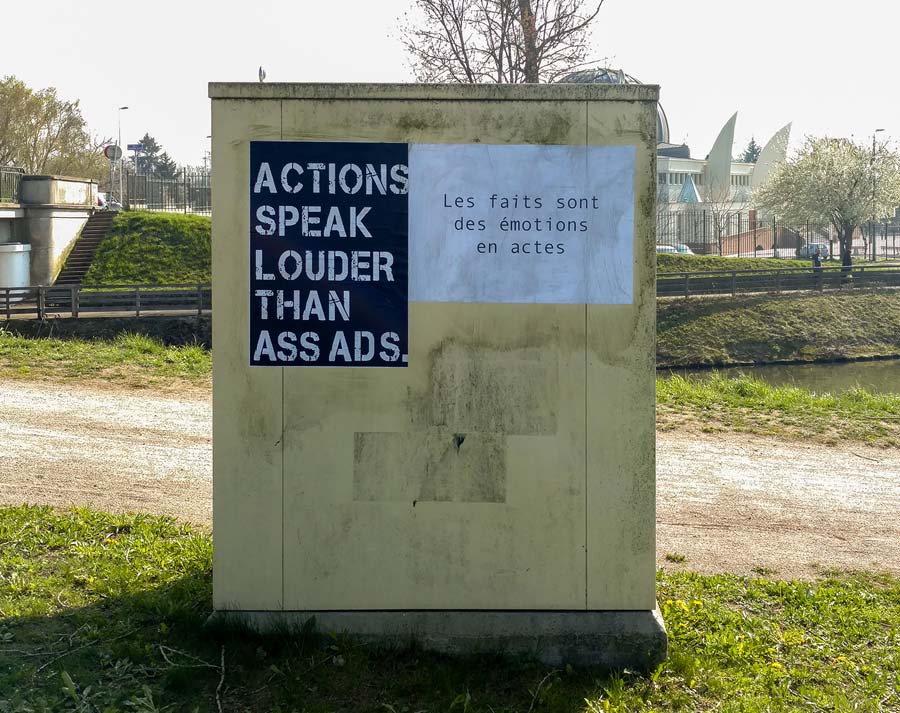
Tatyana Fazlalizadeh: When the Lion Roars Back, a small overview
Brooklyn, NY. July 2019.
From BSA:
“By putting these images of people of color, women, LGBTQ+ folks on the street with their blunt-force sentiments addressed to would-be harassers, she not only stands with them, but Tatyana has also used her work and vision to give them the courage to stand proud, assert their voice and to take public space.
After all, it belongs to the public.
“Women are not outside for your entertainment”, a startling truth for some guys that pointedly highlights abusive behavior toward women on the streets of Brooklyn and many cities around the world. Brooklyn Street Artist Tatyana Fazlalizadeh has been targeting daily oppressive experiences of marginalized people with her campaigns of art on the streets – and in the gallery.
Addressing themes of social justice, racism, LGBTQ+ rights, and sexist street harassment, her beautifully drawn campaigns on wheat-pasted posters and painted murals across the globe have brought attention to issues sorely in need of addressing during hostile rhetoric from some men in the highest offices.”

Jetsonorama Tells “Stories From Ground Zero”
Church Rock, New Mexico. August 2019.
From BSA:
“This spill and these events did not happen in San Diego or Palm Beach. The story doesn’t affect wealthy white families and cannot be used to sell shampoo or real estate. That’s probably why we don’t see it in the press and never on the talking-head news. Street Artist Jetsonorama is not only a photographer who has been wheat-pasting his stunning images of people and nature on desert buildings for over a decade, he is also a doctor on the Navajo reservation, a human-rights activist, and an erudite scholar of American history as it pertains to the poisoning of this land and these people. Today we’re pleased to bring you this long-form examination from Jetsonorama’s perspective on a complicated and tragic US story of environmental poisoning and blight that affects generations of native peoples, miners, military personnel, and everyday people – and has no end in sight.
Most alarming is the news the current White House administration is endeavoring to mine uranium here again.
‘Private companies hired thousands of Navajo men to work the uranium mines and disregarded recommendations to protect miners and mill workers. In 1950 the U.S. Public Health Service began a human testing experiment on Navajo miners without their informed consent during the federal government’s study of the long-term health effects from radiation poisoning. This study followed the same violation of human rights protocol as the US Public Health Service study on the long-term effects of syphilis on humans by experimenting on non-consenting African American men in what is known as the Tuskegee Syphilis Experiment from 1932 – 1972.’ ~ Jetsonorama”

BSA Special Feature: “REWILD” from Escif
Sumatra, Indonesia. September 2019.
From BSA:
“As part of our core commitment as a non-commercial platform that has helped hundreds of artists over the last decade+, BSA significantly helped Escif to raise money for his Indiegogo fundraiser in Spring 2017 when we promoted his “Breath-Time” horticultural project heavily as he planted trees to reforest Mount Olivella in Southern Italy.
Today BSA debuts REWILD, a new tree-related project by the Spanish Street Artists – just as the Global Climate March is spreading to cities around the world, including New York.
The concept of the short film is simple: can’t we just push the “Rewind” button?
‘The narrative runs in reverse, rewinding the clock on deforestation to undo the damage caused by the unsustainable production of one of the world’s most versatile commodities. Beyond the industrialisation of the land, we end at the beginning, a thriving ecosystem alive with wildlife. The concept mirrors the real world action of the Sumatran Orangutan Society and their partners in reclaiming land on the borders of the Leuser rainforests to rewild them with indigenous trees, expanding the boundaries of one of the most biodiverse places on earth.’
Finally, a stunning custom soundtrack by Indonesian composer Nursalim Yadi Anugerah captures and carries this into another world, which is possible.
Shout out to the folks behind the project Splash and Burn: a cultural initiative curated by Ernest Zacharevic and coordinated by Charlotte Pyatt run in association with the Sumatran Orangutan Society and the Orangutan Information Centre.“
 BROOKLYN STREET ART LOVES YOU MORE EVERY DAY
BROOKLYN STREET ART LOVES YOU MORE EVERY DAY



